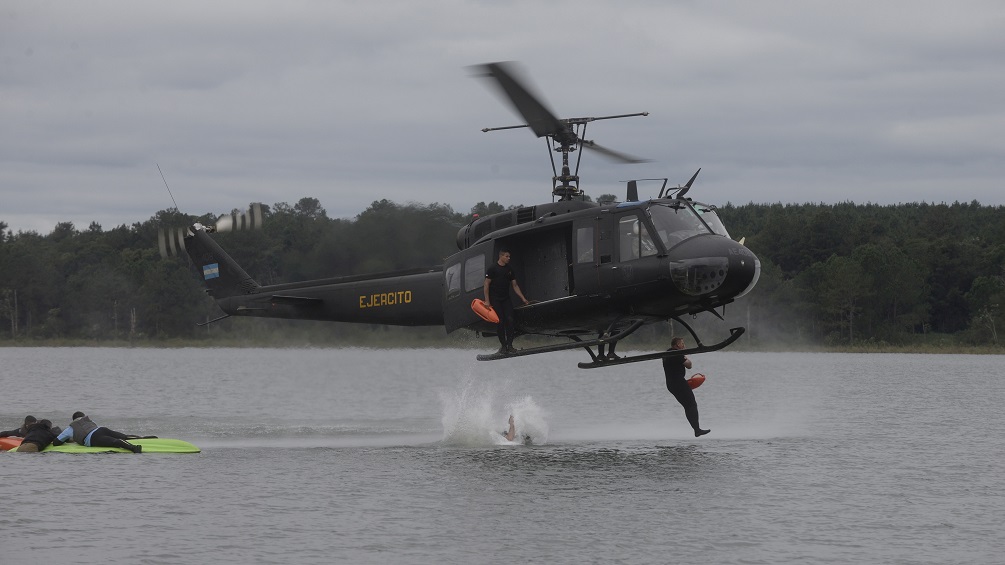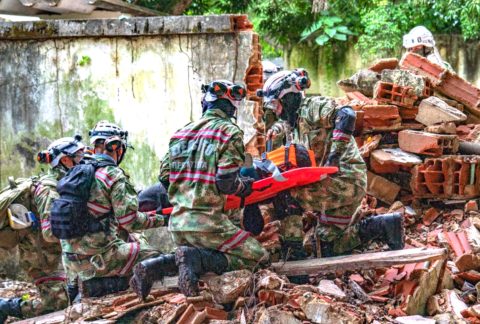The Exercise on Interagency Operations on Protection of the Environmental and Natural Resources, carried out at the end of June, sought to coordinate participating forces’ responses.
On the ground training took place at the facilities of the Argentine Army’s 12th Mountain Brigade, and included officers from Argentina, Brazil, Canada, Chile, Colombia, the Dominican Republic, Ecuador, Honduras, Mexico, Paraguay, Peru, Spain, the United States, and Uruguay.
“We’re not only gaining experience, ideas, and contributions from national agencies, but also from all those armies, which allows us to learn so much more,” said Lieutenant General Claudio Pasqualini, chief of the Argentine Army’s General Staff.
Vulnerable areas
According to an April 2019 report by the Andean Development Corporation – Development Bank of Latin America, Latin American countries must better prepare to guarantee their citizens’ security in the face of increasingly extreme natural catastrophes. The report recommends involving neighboring countries to better understand risk and develop strategies, among other suggestions.
The World Economic Forum’s 2019 Global Risk Report indicates that Central and South American countries on the Caribbean and Pacific coasts are in higher risk zones for earthquakes, tsunamis, hurricanes, floods, and other natural events. In the first quarter of 2019, Argentina, Bolivia, Colombia, Paraguay, and Peru suffered floods and landslides that affected millions of people. In Argentina, for example, one third of the population of six provinces — more than 3 million people — were evacuated, according to ReliefWeb, a digital service of the United Nations Office for the Coordination of Humanitarian Affairs.
Taking into account recent regional events, the exercise simulated a natural disaster resulting from the rising of the Paraná and Iguazú rivers in northeast Argentina, which caused overflows and floods that affected communication channels, roads, electric companies, and neighboring towns.
Faced with this disaster, local authorities requested assistance to initiate planning efforts and create a contingency plan.
Measures on the ground
In the first phase, participants practiced rescuing people who had fallen into the water and were in an area of difficult access, using ropes, harnesses, and other means. Another phase consisted of a simulated shipwreck. The efforts began with the launch of military rescue swimmers from Bell UH-1H helicopters as first responders.
Finally, the exercise simulated an accident of a truck carrying chemicals that spilled toxic substances.

Participants proceeded to rescue people, and also evacuated and isolated the contaminated area and conducted an air evacuation.
“The concept of complementarity is vital in emergencies,” said Commander Alberto Modino Iturralde, member of the Spanish Armed Forces’ Military Emergency Unit. “One agency can contribute with psychological aid, another in the humanitarian aspect, the armies with intervention, transport, and logistics support units. Contribution from all in an emergency is a vital concept.”
Regional strengthening
Created in 1960 as a forum for army commanders of the western hemisphere, CAA is an international military organization comprising 22 countries of the Americas, the Caribbean and four observer countries —among them, Spain. CAA holds biennial cycles of conferences and specialized exercises aimed at improving interoperability. The main theme of its 2020-2021 cycle will be interagency operations and environmental and natural resource protection.
“Since its creation in Panama, CAA constitutes a forum to discuss and analyze ideas and topics of interest, providing high-quality products that our armies can use according to their particular characteristics and organizations,” said Argentine Army Brigadier General Aldo Ferrari, commander of the 12th Mountain Brigade.









